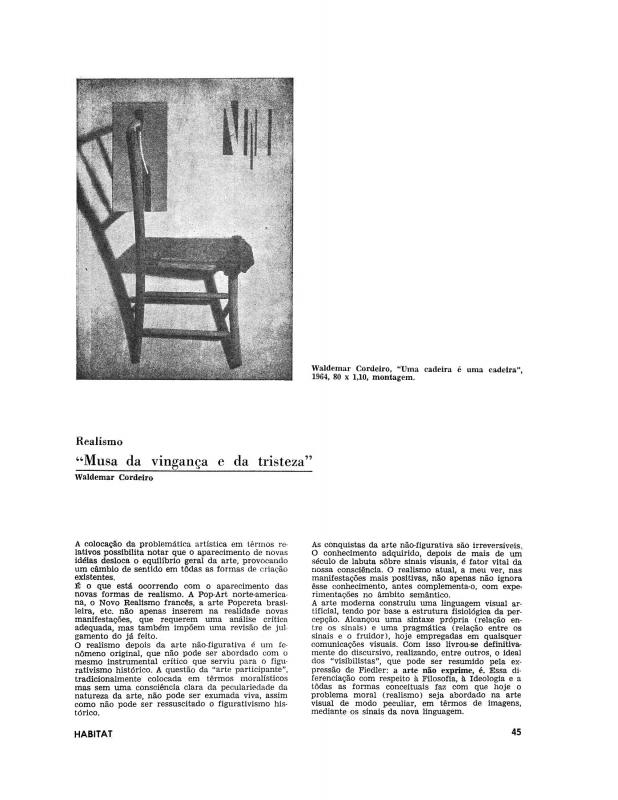Contrarian painter, designer, landscape artist, art critic, and theorist Waldemar Cordeiro (1925–73) formulates a paradigm of theory and of participation at the core of art and technological advances. After having participated in the Concrete art group Ruptura (founded in 1952) in the fifties, and formulating semantic objects or “Popcretos” in the sixties, he engaged in research and artistic experimentation. In this text, he grapples with a dialectic that vacillates between “things” and “realities” in relation to a conception of “pop” informed by the thinking of German theorists like Max Bense.
Significantly, Cordeiro formulates a difference between “nova figuração” and figurativism, the first of which he considers akin to objective art. This is why he harshly criticizes the figurative paintings that Ivan [Ferreira] Serpa (1923–73) was producing at the time in conjunction with Rio de Janeiro-based Grupo Frente, whose members included Lygia Clark, Abraham Palatnik, Helio Oiticica, and Aluísio Carvão. In the mid-fifties, that group upheld a strain of geometric abstraction whose vision, called “Neo-concretism,” was diametrically opposed to Cordeiro’s beliefs. Due to the participation of Ferreira Gullar, the group’s most important theorist, the differences between these two tendencies would become a topic of national debate.
Journalist, translator, and art critic for the newspaper Folha de S. Paulo and the art magazine HABITAT, José Geraldo Vieira (1897–1977) played a major role in the debates on figuration and abstraction, as well as other important topics that took place in the fifties and sixties.
For a related text. see Waldemar Cordeiro’s “Realismo: musa da vingança e da tristeza” [doc. no. 1110839].
For additional information, see José Geraldo Vieira’s “O dilema figuração–abstração,” HABITAT, São Paulo, no. 75 (January–February 1964); and Waldemar Cordeiro’s “Arte concreta semântica,” Waldemar Cordeiro (São Paulo: Galeria Atrium, 1964).

